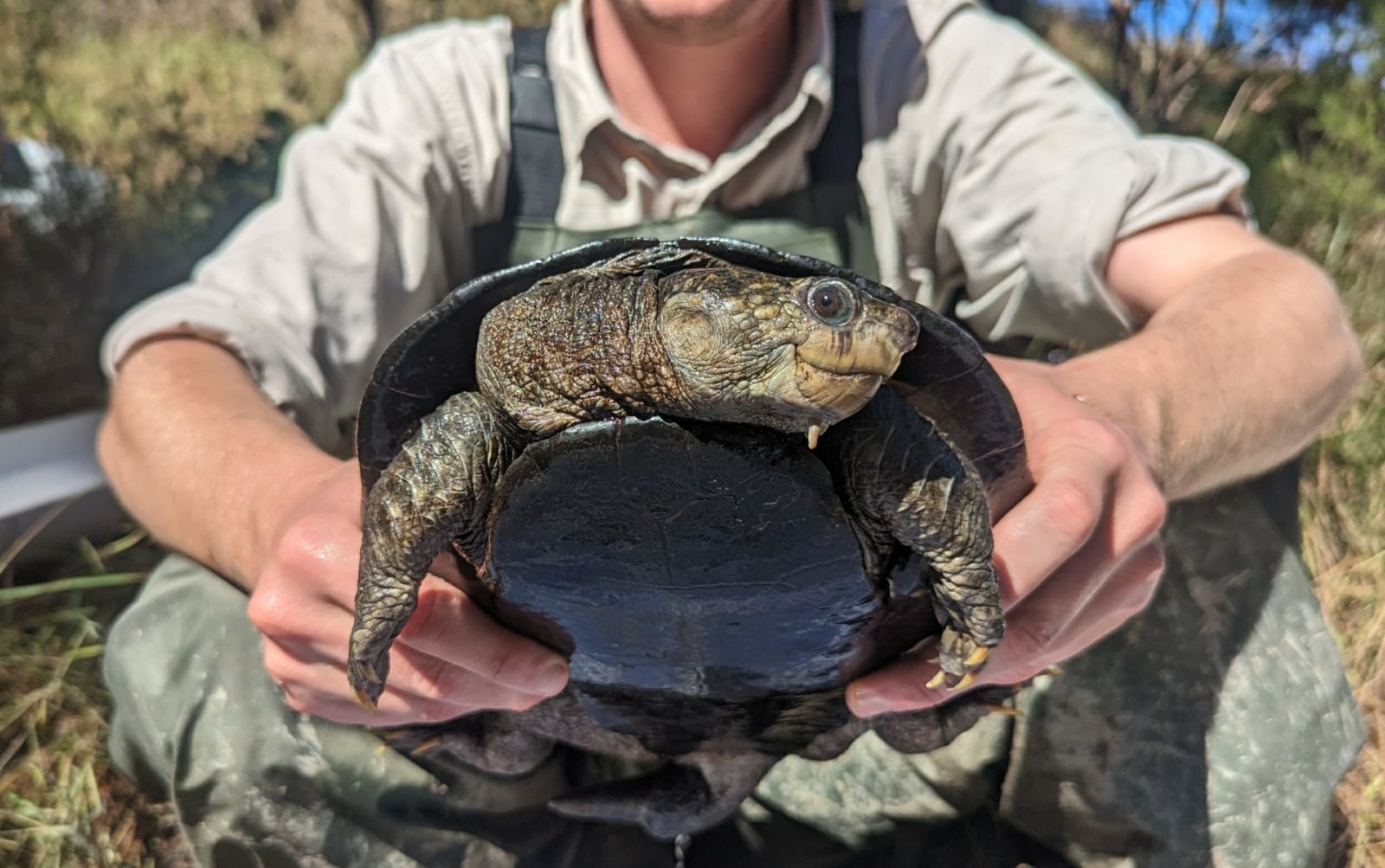Critically endangered turtles discovered
Burnett Mary Regional Group (BMRG) scientists have discovered critically endangered white-throated snapping turtles in the Baffle Creek for the first time.
Researchers made the important discovery recently while assessing the waterway as part of the Australian Government’s Emergency Flood Recovery project for wildlife and habitat.
Until now, the white-throated snapping turtle’s natural distribution had been documented as the Fitzroy, Burnett and Mary Rivers.
BMRG research director, Tom Espinoza, said the breakthrough was made on a freshwater section of the creek near Lowmead with landholder assistance.
Nets were used to safely trap, record and release fish and turtle species.
“It’s the Baffle by name and baffle by nature,” Mr Espinoza said.
“The catchment has a lot of value because it’s one of the only rivers on the east coast of Australia that doesn’t have any major water infrastructure on it.”
Mr Espinoza said three turtles were found, one female and two males.
“The significance of finding three of the turtles is there’s potentially a self-sustaining population of a critically endangered species,” he said.
“It extends the area we now know the species inhabits and genetically it could be very important.
“Historically, this catchment has been rarely sampled for freshwater threatened species, and it’s free of any dams or weirs.
“It’s a largely untouched, natural watercourse.”
Mr Espinoza said next steps included more comprehensive sampling, genetic analysis and risk assessment.
“It’s potentially an important research population to look at how a species behaves in its natural environment,” he said.
“Turtles are extremely important in rivers. They’re the vacuum cleaner of a watercourse; they clean up decomposing organic material and help to maintain good water quality.
“They’re also a totem for local First Nations people.”
The white-throated snapping turtle (Elseya albagula) grows to about 45cm long and is Australia’s largest freshwater turtle. It can live for up to 100 years.
It’s known colloquially as a “bum-breathing turtle” because it can absorb oxygen through its anus while submerged.


